
Exploring the Brilliance of Eastman Lithium Batteries
Eastman lithium batteries stand out as the epitome of excellence in energy storage technology. Behind their remarkable performance lies a blend of innovative features designed to elevate your power experience. Let's delve into what makes Eastman lithium batteries truly exceptional.
First and foremost, Eastman batteries boast an impressive energy density, allowing them to store more power in a compact and lightweight package. Whether you're powering your appliances or electric connections, Eastman batteries deliver the sustained performance you need to stay connected and productive.
But it's not just about raw power—Eastman batteries are also engineered for longevity. With a high cycle life and minimal capacity degradation over time, these batteries offer reliable performance day in and day out. Say goodbye to frequent replacements and hello to uninterrupted power.
Safety is a top priority with Eastman lithium batteries. Rigorous testing and quality control measures ensure that each battery meets the highest industry standards for protection against overcharging, short circuits, and thermal events. Whether you're at home, at work, or on the go, you can trust Eastman batteries to keep you safe and powered up.
What sets Eastman batteries apart is their versatility. With a wide range of form factors and configurations available, there's an Lithium battery to suit every application. Whether you need a compact battery for your home or a high-capacity battery for your commercial application, Eastman has you covered.
Looking ahead, Eastman remains committed to pushing the boundaries of lithium battery technology. Through ongoing research and development efforts, we're constantly innovating to deliver even greater performance, efficiency, and sustainability. With Eastman lithium batteries, the future of power is brighter than ever.
Eastman the wise choice for all your energy storage needs.

AGM VRLA Batteries: Your Ultimate Guide
In the realm of energy storage, AGM VRLA batteries stand as stalwarts of reliability and efficiency. As part of Eastman's comprehensive range, these batteries are engineered to deliver consistent performance across a myriad of applications. But what exactly is AGM VRLA, and what sets these batteries apart from the rest? Let's delve into the intricate world of AGM VRLA batteries and uncover their secrets.
Understanding VRLA:
VRLA, or Valve-Regulated Lead-Acid, is the gold standard in low-maintenance rechargeable batteries. What makes VRLA batteries unique is their sealed design, which prevents electrolyte spillage even in the event of a puncture. This feature not only enhances safety but also eliminates the need for electrolyte replenishment, earning VRLA batteries the coveted title of "maintenance-free."
AGM Technology:
At the heart of AGM VRLA batteries lies Absorbent Glass Mat (AGM) technology—a revolutionary advancement in battery design. Unlike traditional flooded lead-acid batteries, AGM batteries immobilize the electrolyte within a porous glass mat separator. This not only enhances safety but also facilitates oxygen recombination, minimizing gas emissions and ensuring a maintenance-free operation.
Operation Insights:
The operation of AGM VRLA batteries is a testament to their sophistication. During discharge, lead plates immersed in the electrolyte undergo chemical reactions, releasing water and lead sulphate. As the discharge progresses, this process reverses, converting water and lead sulphate back into acid and lead. The charging process must be carefully synchronized with the battery's capacity to ensure optimal energy absorption without causing electrolysis, which can lead to gas production and water loss.
Safety Features:
AGM VRLA batteries are equipped with safety valves that regulate internal pressure, preventing gas buildup and maintaining a safe operating environment. These valves allow excess gases to escape in the event of overpressure, ensuring the battery remains within safe limits—a feature that earns them the "Valve Regulated" designation.
In conclusion, AGM VRLA batteries represent the pinnacle of battery technology, combining reliability, efficiency, and safety in a compact and maintenance-free package. Whether you're powering critical telecommunications equipment or renewable energy systems, Eastman's range of AGM VRLA batteries is your trusted companion for uninterrupted power delivery. So, next time you're in need of a reliable energy storage solution, look no further than AGM VRLA batteries from Eastman—the epitome of excellence in battery technology.

Solar Energy Explained
Solar energy is generated from the sun and converted into electrical energy, which we use daily. It is known as the world’s most popular renewable energy source and a study by New York University states its demand stems from the fact it is the cleanest and most abundant renewable energy source available today.
How does solar power work?
The two types of energy generated by solar power, electricity and heat, are created by converting energy from the sun into power. This form of energy is usually distributed through solar panels, which range in size from smaller residential rooftops to sprawling farms and manufacturing facilities.
Is solar energy a clean energy source?
As long as the sun continues to shine, it will release energy. Solar power does not generate any harmful greenhouse gasses and is 100 per cent environmentally safe and renewable. The carbon footprints of solar panels are also minimal as most are built from recyclable materials and last up to 25 years.
How is electricity produced from solar energy?
To create electricity from solar energy, it is important to have the necessary tools. In this case, a solar panel and inverter.
Solar panels are usually made of a semiconductor material such as silicone. When exposed to the sun, energy from sunlight is absorbed into the PV cells in the solar panel. This creates electrical charges, known as direct current (DC), that move in response to the internal electric field inside the PV cell. This is then converted to alternating current (AC) by using a device called an inverter, which is the electricity used to power your appliances.
Why invest in solar power?
Solar energy plays a vital role in reducing climate change and saving the world’s natural resources, population, wildlife and ecosystems. As a renewable form of energy, the continued use of solar power can even increase air quality and save water that would normally be used in the production of other energy sources. At Eastman World, we offer a range of solar solutions designed for every need.
Solar charge converters:
These ensure deep cycle batteries are not overcharged during the day and the power doesn’t run backwards to the solar panels overnight and drain the batteries.
Solar batteries:
These are used to store the excess electricity generated by your solar panels and can be used to power appliances during power outages. We offer gel, carbon, lithium, sealed maintenance-free battery SMF and tubular batteries for this purpose.
Solar inverters:
These inverters convert energy generated by solar panels into electrical energy that is used to power appliances. We offer on-grid, off-grid and hybrid Inverters for this use. On-grid inverters connect directly to the power grid and help generate the Power. Off-grid inverters charge solar batteries via a charger controller through electricity from solar panels. That electricity is then converted using an inverter so that it can power your home or business. A hybrid inverter is a combination of an inverter, a charge controller, and a power grid. The main advantage of hybrid inverters is they can work like power backup sources also feed the access power to the national grid.
Solar panels:
Eastman solar panels use half-cut cell technology to lower the risk of current wastage and maximise the flow of energy needed. Half-cut solar cell technology boosts the energy production of solar panels by lowering cell size, allowing more cells to fit on the panel and generate more energy.
Investing in solar power for your property will also make the cost of energy more affordable and is more environmentally responsible in the long run. Find out more about our solar solutions and how you can add solar energy to power your property.
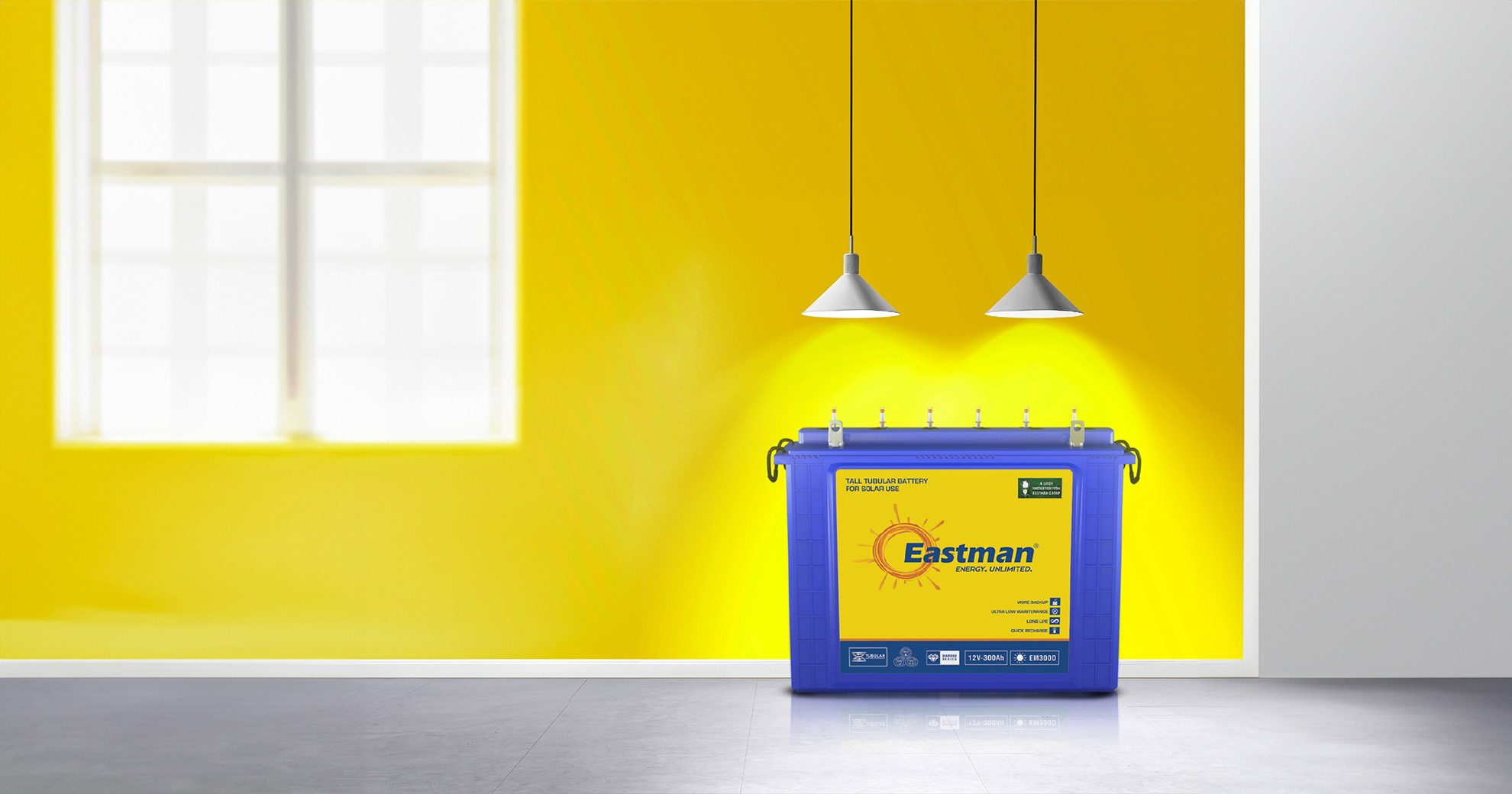
Ensuring Optimal Performance: Maintenance Tips and Best Practices for Tubular Batteries
In today’s fast-paced world, reliable power sources are essential for various applications, from home essentials to industrial machinery. Among the numerous battery technologies available, tubular batteries stand out as a reliable and versatile option. In this blog, we’ll delve into the intricacies of tubular batteries, exploring their technology, advantages, applications, and why they’re a superior choice for many power needs.
Maintenance & Troubleshooting Instruction
Maintenance
Batteries may lose some initial charge during shipment and storage, and depending on the storage time, they may require a freshening charge.
Battery Cleaning
Observe the battery for cleanliness at regular intervals. Keep cell terminals and connectors free of corrosion. Terminal corrosion could adversely affect the performance of the battery, and it could present a safety hazard.
Standard Cleaning
To perform a standard cleaning of the battery, follow the procedures below:
- Disconnect the battery.
- Wipe off any accumulation of dust on the battery covers with cloth dampened in clean water.
To clean mild corrosion from the battery:
- Disconnect the battery.
- Remove corrosion by wiping with a cloth dampened with bicarbonate of soda solution follow with a cloth dampened with clear water.
- Dry with a clean cloth.
- Apply Petroleum Jelly on Fasteners.
Do not use any type of oil, solvent, detergent, petroleum-based solvent, or ammonia solution to clean the jars or covers. These materials will have an adverse effect and cause permanent damage to the battery jar and cover and will void the warranty.
Do’s and Don’ts
Do’s
- Store the batteries in a cold and dry location, when not in use.
- Keep the batteries away from the heat source, sparks, fire, direct sunlight, rain etc.,
- Keep the batteries clean and dry.
- Refresh (Charge)the battery once every 3months, if stored for longer periods.
- Check the tightness of the electrical connections for every month.
- Monitor charge voltage / current at monthly intervals and adjust it, if required.
- After discharge recharge the batteries immediately.
- Note down and record the battery voltage readings once every month.
- Use insulated tools only during installation to avoid the short circuit of a battery.
- Note: Apply correct torque 8–10Nmfor tightening the bolts.
- TopUp with DM Water Only
Don’ts
- Do not expose the packed batteries to rain and sunlight.
- Do not add water or acid.
- Do not make tap connections.
- Do not mix batteries of different types & makes.
- Do not charge the batteries in sealed cubicles.
- Do not short-circuit the battery.
- Do not exceed the storage period without giving the freshening charge.
- Do not discharge the batteries below 10.50V. Note: Do not over tighten the bolts.
By following these maintenance tips and best practices, you can ensure that your tubular batteries continue to deliver optimal performance and extend their lifespan. Regular attention and care will not only save you money in the long run but also provide you with a reliable and consistent power source for your various applications, from emergency backup power to uninterrupted solar energy storage.
Check out the available models Here

The Benefits of Solar Panels
If you are thinking of managing your power consumption and doing your part for the environment by adding solar panels to your home, our guide on the pros of solar PV technology can help you decide if that is the right option for you.
What is solar energy?
In simple terms, solar energy is heat and electricity that is harvested from sunlight. Sunlight contains elemental particles called photons that release energy when absorbed by the photovoltaic (PV) cells in a solar panel. This action creates an electric current. The more light solar panels are exposed to, the more electricity they can produce.
The benefits of solar panels
1. Renewable and better for the environment
It’s no secret that while we have more access to fossil fuels, burning them to create energy releases harmful chemicals into the air. Since solar power comes directly from the sun, it is a clean energy source that is always available and does not pollute the environment.
2. Reduces electric bills
Solar panels are a great alternative source to obtaining power by subscribing to your local energy grid. While the initial cost of installing a solar panel can be expensive, you end up saving more on your power bills making it more cost-effective long term.
3. It is an independent energy source
Having a home run completely on solar energy makes it easier to function completely detached from your local power grid. Paired with a Solar Battery System, your solar panels can store energy to keep the power on at night and act as a backup power source in case of an emergency.
4. Low maintenance
As long as there are no harsh weather conditions, solar panels require very little maintenance once installed. Just make sure to get a professional team to clean it once every few months and it should work well for years.
5. Diverse uses
Solar panels are not just useful to power up your home and appliances, they can also be used to provide energy to places that don’t have access to a local power grid. They are useful in remote areas and can be used on boats and satellites.
Power your home or business with solar
Eastman Solar panels are made with the highest quality materials and follow strict safety guidelines They are easy to install and will equip you with more green, renewable energy at your fingertips. Click here for more information and to start your solar power journey.

Products Behind Residential Solar Energy
In an era where sustainability and environmental consciousness are at the forefront of global concerns, residential solar energy has emerged as a powerful solution to reduce carbon emissions and dependency on fossil fuels. Behind the scenes of every solar-powered home, a suite of innovative products works seamlessly together to harness the sun’s energy and transform it into electricity.
The Science Behind Solar Energy
Solar energy’s essence lies in the photovoltaic (PV) effect, discovered in the 19th century. It involves the interaction of photons (light particles) and electrons (charged particles) in materials like silicon. When photons hit the material, they energize electrons, prompting them to move and create an electric current. Guided through a circuit by an electric field, these current produces practical electricity—a direct and foundational process for solar power.
Solar Panels: From Sunlight to Electricity
Solar panels, also known as photovoltaic panels, are the technology that captures sunlight and transforms it into electricity. These panels consist of numerous solar cells connected, each containing layers of semiconducting materials. Silicon is the most used material due to its efficiency and availability. When sunlight strikes a solar panel, the photons excite the electrons within the cells, generating an electric current. This direct current (DC) is then converted into alternating current (AC) by an inverter.
Inverters: Transforming DC into Usable AC
While solar panels generate DC electricity, most of our household appliances and electrical systems run on alternating current (AC). This is where inverters come into play. Inverters are devices that convert the DC electricity produced by solar panels into the AC electricity that powers our homes and businesses. They ensure that the energy harvested from the sun is compatible with our daily energy needs.
Batteries: Storing Excess Energy
Solar energy production isn’t constant throughout the day, and excess energy generated during peak sunlight hours often goes to waste. Enter solar batteries, the solution to this challenge. Solar batteries store surplus electricity produced by your solar panels, making it available for use during cloudy days or at night when the sun isn’t shining. This not only maximizes your energy consumption but also enhances your energy independence.
Myths & Facts of Solar Energy
Myth 1: Solar Panels Only Work in Sunny Climates.
Fact: Solar panels can generate electricity even on cloudy days. While sunlight intensity affects efficiency, panels can still produce power under diffused light. Germany, with its often-overcast skies, is a prime example of successful solar adoption.
Myth 2: Solar Panels Require Constant Maintenance.
Fact: Solar panels have few moving parts and require minimal maintenance. Regular cleaning to remove dirt and debris is usually sufficient. Modern panels are built to withstand various weather conditions.
Myth 3: Solar Energy Is Too Expensive.
Fact: While the initial investment can be significant, solar costs have dramatically decreased in recent years. Tax incentives, rebates, and the long-term savings on electricity bills make solar a financially viable option.
Myth 4: Solar Panels Can’t Be Used at Night.
Fact: Solar panels produce electricity when exposed to sunlight, but excess energy can be stored in batteries for use during nighttime hours. Alternatively, many solar-powered homes remain connected to the grid, allowing for electricity exchange.
Myth 5: Solar Energy Is Inefficient.
Fact: Solar panel efficiency has improved significantly, with some panels reaching over 20% efficiency. Advances in technology continue to enhance the conversion of sunlight into electricity.
Solar energy represents a transformative shift in how we harness power for our modern world. By understanding the science behind solar panels and their photovoltaic effect, we can fully appreciate the clean, sustainable, and limitless potential of the sun as an energy source. As technology continues to advance and costs decrease, solar energy is poised to play an increasingly significant role in shaping a greener, more sustainable future for generations to come.
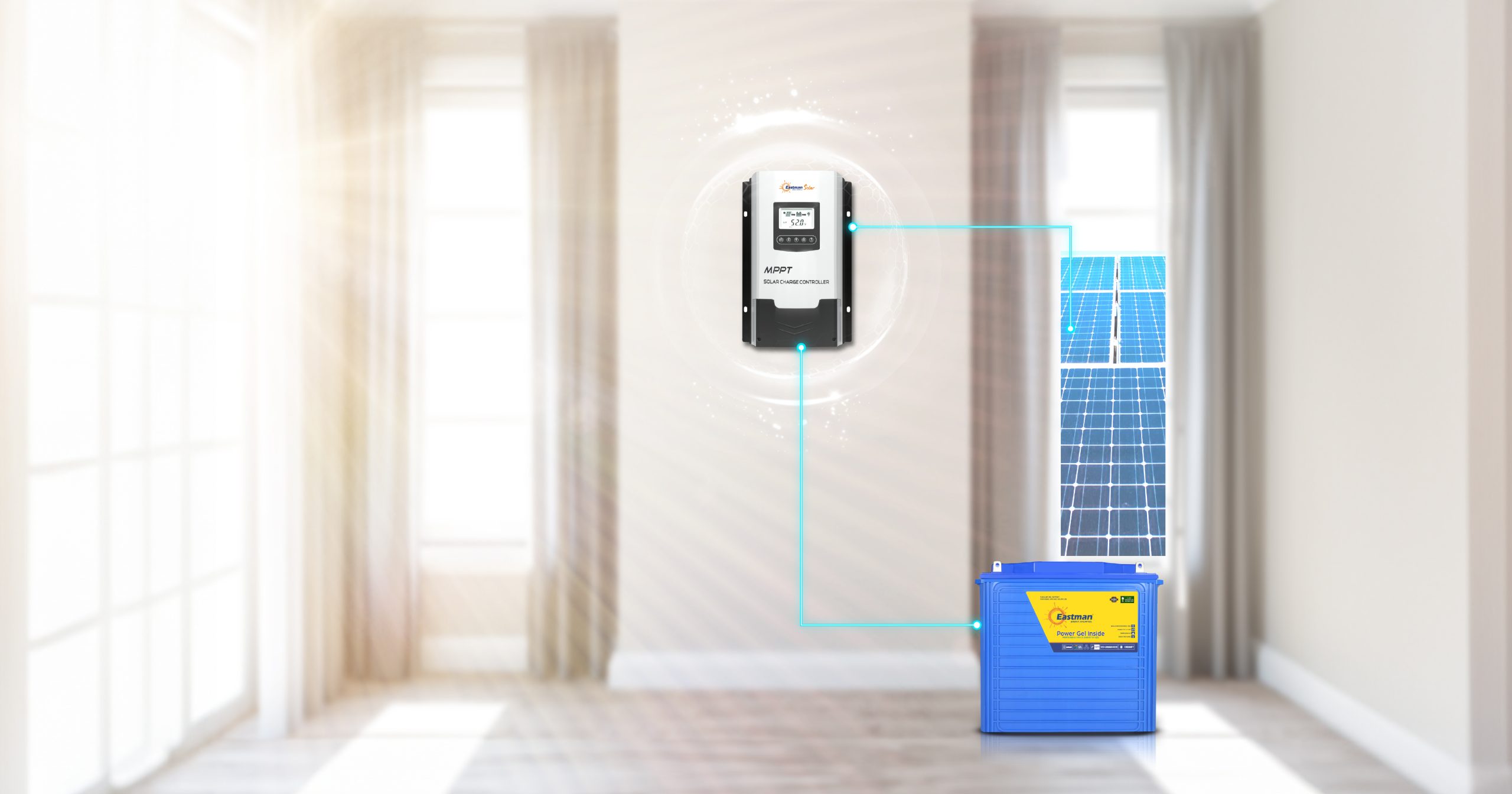
Maximizing Solar Power Efficiency: The Essential Role of Solar Charge Controllers
In today’s era of increasing environmental consciousness and the quest for renewable energy sources, solar power stands tall as a reliable and sustainable option. However, to make the most of your solar panels and ensure they last for years, you need a crucial component in your solar setup: a solar charge controller.
What is a Solar Charge Controller?
A solar charge controller, also known as a charge regulator, is a device that manages the power flowing from your solar panels to your battery bank. Its primary function is to regulate the voltage and current coming from the solar panels and prevent overcharging or deep discharging of the batteries.
How Does a Solar Charge Controller Work?
Solar panels generate direct current (DC) electricity, which is then sent to the charge controller. The charge controller acts as a traffic cop, ensuring that the right amount of power flows to the batteries. When the batteries are fully charged, it prevents overcharging by diverting excess electricity away from them.
Additionally, during periods of low sunlight or at night, the charge controller prevents the batteries from discharging too much, prolonging their lifespan. Some advanced models also include features like temperature compensation, which adjusts charging parameters based on temperature fluctuations.
Reasons to Invest in a Solar Charge Controller
Battery Longevity:
A solar charge controller is essential for extending the life of your battery bank. By preventing overcharging and deep discharging, it safeguards the integrity of your batteries, ultimately saving you money in the long run.
Increased Efficiency:
Without a charge controller, solar panels can overcharge batteries, leading to energy loss and potential damage. By regulating the charge, the controller ensures that every bit of energy is used efficiently.
Protection Against Voltage Fluctuations:
In regions prone to voltage spikes or drops, a solar charge controller acts as a buffer, stabilizing the power supply to your batteries.
Safety First:
Overcharging batteries can lead to hazardous conditions, including the risk of fire or explosion. A charge controller provides a critical layer of safety, reducing these risks.
Maintenance-Free Operation:
Once installed, a solar charge controller requires minimal maintenance, providing hassle-free operation for years.
Compatibility with Various Battery Types:
Different batteries have distinct charging requirements. A quality charge controller can be adjusted to suit the specific needs of lead-acid, gel, AGM, or lithium-ion batteries.
A solar charge controller might seem like a small component in a solar power system, but its impact is profound. By regulating the flow of energy, it protects your batteries, increases efficiency, and ensures the safety of your entire solar setup. Investing in a high-quality solar charge controller is a wise decision for anyone serious about maximizing the potential of their solar power system. Don’t cut corners on this critical component; your energy savings and system longevity will thank you.
Check the available models of Solar charge controller from Eastman Here
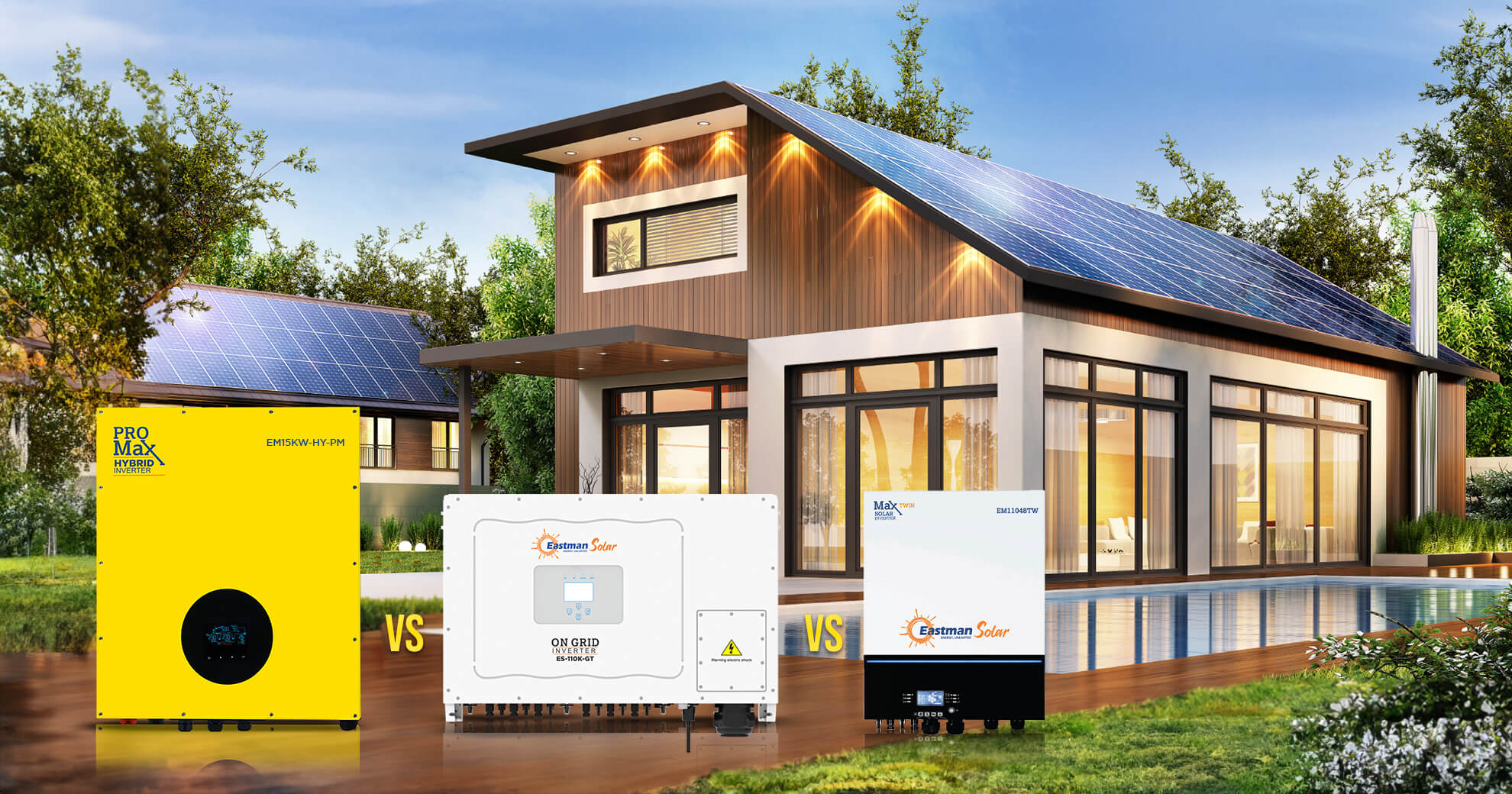
Choosing the right inverter for your home: a comprehensive guide
In a world that relies heavily on electricity, power outages can disrupt our daily lives and bring productivity to a halt. This is where inverters come to the rescue. An inverter is a device that converts DC (Direct Current) power from sources such as solar panels into AC (Alternating Current) power, which is the type of electricity used in homes and businesses. Selecting the right inverter for your home is crucial to ensure uninterrupted power supply during blackouts. In this comprehensive guide, we’ll walk you through the key factors to consider when choosing the perfect inverter for your needs.
On-grid Inverter
should be preferred if you have a constant power supply from local grid (utility power/ Main Electricity) and your purpose is to reduce your monthly electricity bills. On-grid inverters gives you quick payback as there is no requirement of batteries and energy storage, excess energy goes to your local grid which helps to reduce energy bills.
Off-Grid Inverter
should be preferred if your home is either not connected to local power grid or continuous grid supply is not available due to regular power cuts. Here, energy generated through panels travels through the inverter to a power bank or storage batteries Then your home pulls electricity from the battery bank for consumption. Off-Grid systems cost more than grid-tied due to inclusion of battery storage, but with Off-grid systems you become completely self-sufficient for energy without relying on any other electricity / power sources, which gives total peace of mind.
Hybrid Inverter
are most popular because it is connected to grid but same time it has a battery backup. The Beauty of Hybrid system is that you will always have a power in any situation. The excess energy that your solar panels generate (but your home doesn’t use) will be stored in batteries first, once batteries fully charged then excess energy will feed into the grid. In case of no sunshine (during evening) system automatically switch energy from batteries, later when batteries near to discharge (during night), then system automatically start importing power from the grid.
Other Important things to keep in mind when opting for Inverts.
Safety Features:
Safety should be a priority. Always look for inverters with features like overload protection, short-circuit protection, and surge protection to safeguard your appliances and the inverter system itself.
Brand Reputation and Warranty:
Opt for well-established brands like Eastman with a good reputation for producing reliable and durable inverters.
Selecting the right inverter for your home is a decision that should be based on careful consideration of your power requirements, battery preferences, efficiency needs, and more. Remember that an inverter is a critical component of your backup power system, so making an informed choice can make all the difference when the lights go out. With the right inverter in place, you can enjoy peace of mind knowing that you’re prepared for any unexpected power disruptions.
Want to learn more about solar inverters and options available?Click here:
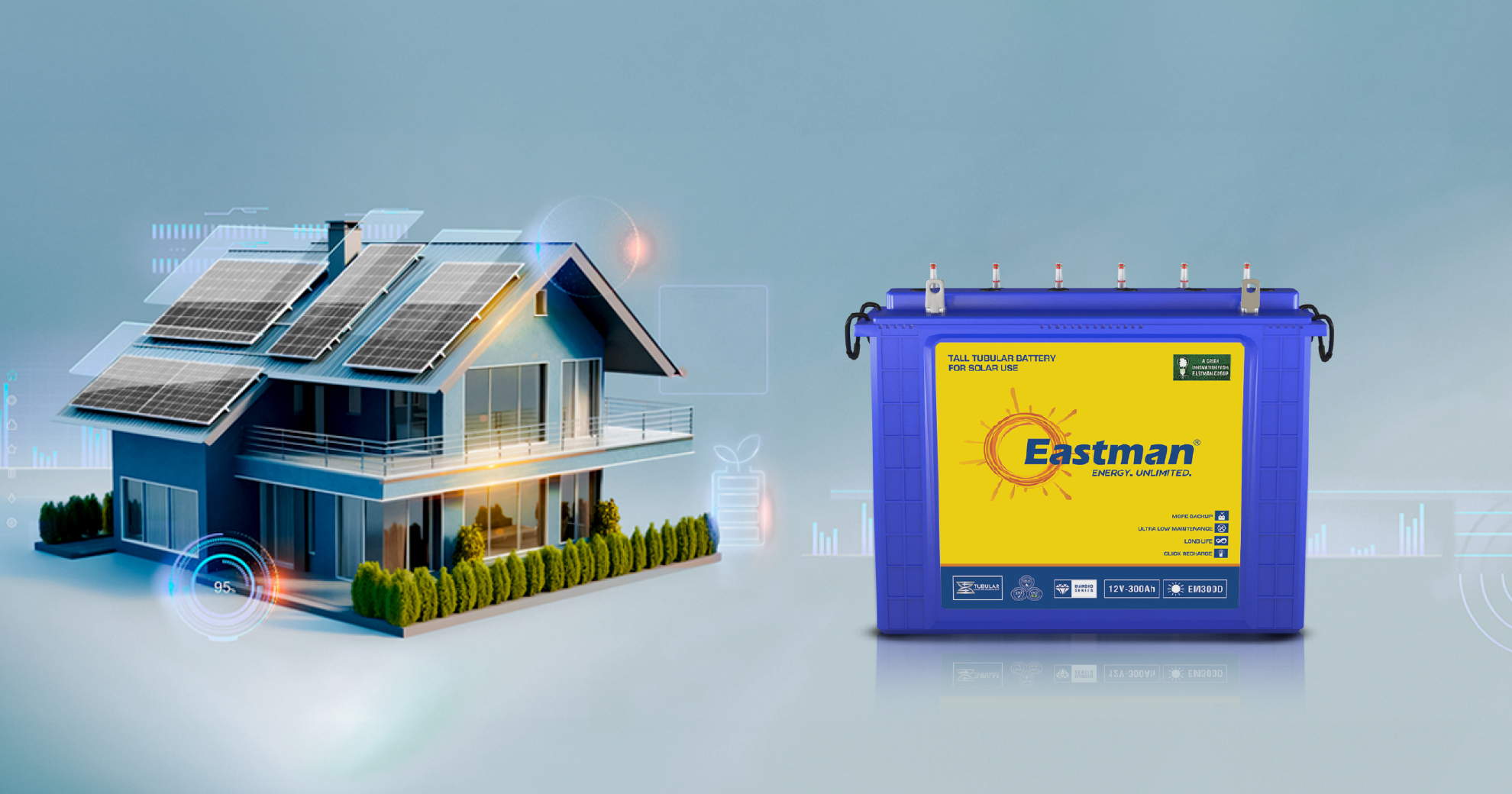
Why Eastman Tubular Batteries Are the Best Investment.
Investing in the right battery is crucial, especially when it comes to applications like solar power systems, and backup power sources. Tubular batteries have gained immense popularity over the years, and for good reason.
What are Tubular Batteries?
Tubular batteries are a type of lead-acid battery characterized by their unique construction. Unlike conventional flat-plate batteries, tubular batteries feature positive plates in the form of cylindrical tubes, providing enhanced structural integrity and longevity.
How Does Tubular Technology Work?
It has flooded rechargeable batteries which consist of two electrodes one is lead (Pb) and other is a lead oxide (PbO2) and electrolytes are Sulfuric acid. Electrodes are dipped in Electrolytes. A chemical reaction follows between the electrodes and electrolytes inside respective batteries which induces the accumulation of DC current resulting in rechargeable batteries. It only releases H2 gas. In Tubular batteries, the positive plate is a Tube made of cloth which holds the electrodes inside it and negative plate has a flat pasted structure. Tubular batteries have thicker plates, so they have a larger number of discharging cycles.
Applications:
Tubular batteries have emerged as a cornerstone in modern energy storage, with applications spanning various sectors, including renewable energy, green energy, solar applications, backup systems, and telecommunications. Their robust design and impressive longevity make them a sound investment for those seeking reliable and sustainable power solutions. As technology advances, these batteries are poised to play an even more significant role in shaping the future of energy storage, with ongoing innovations in battery technology and an expanding range of applications. Tubular batteries are set to revolutionize how we harness and store energy, solidifying their place as a linchpin in the transition towards more resilient, reliable, and environmentally conscious energy systems.
Why Eastman Tubular Technology is better?
Eastman’s focus is on delivering a reliable and sustainable power supply through its batteries. Every piece of equipment is crafted by a team of highly skilled and dedicated employees. We prioritize offering genuine products, ensuring quality performance, and providing top-notch customer service. Our commitment lies in serving our customers and offering comprehensive solutions to meet their needs through continuous innovation. Here are some notable applications of Tubular Batteries.
Key Benefits
- Higher Charge Efficiency
- Low self-discharge
- Ultra-low maintenance & higher cycle life
- Suitable for frequent power cut areas
- Recommended for tropical climates.
- Level indicator for easy maintenance Reliable & steady performance, even on heavy load
- Eco-Friendly aqua trap vent plugs ensuring no acidic fumes.
Unique Features
- Thicker& Wider Spines for long life and deep cycle applications.
- Usage of Best Antimony alloy for ultra-low maintenance
- High porous& oxidation resistance gauntlet for extra backup & long life
- Advanced high surface carbon used for enhanced performances.
Your choice of battery can significantly impact your overall energy system’s efficiency and reliability, making tubular batteries an excellent investment for both residential and commercial applications. So, consider the long-term benefits and choose tubular batteries for a dependable and cost-effective power solution.
Check out the available modelsHere:
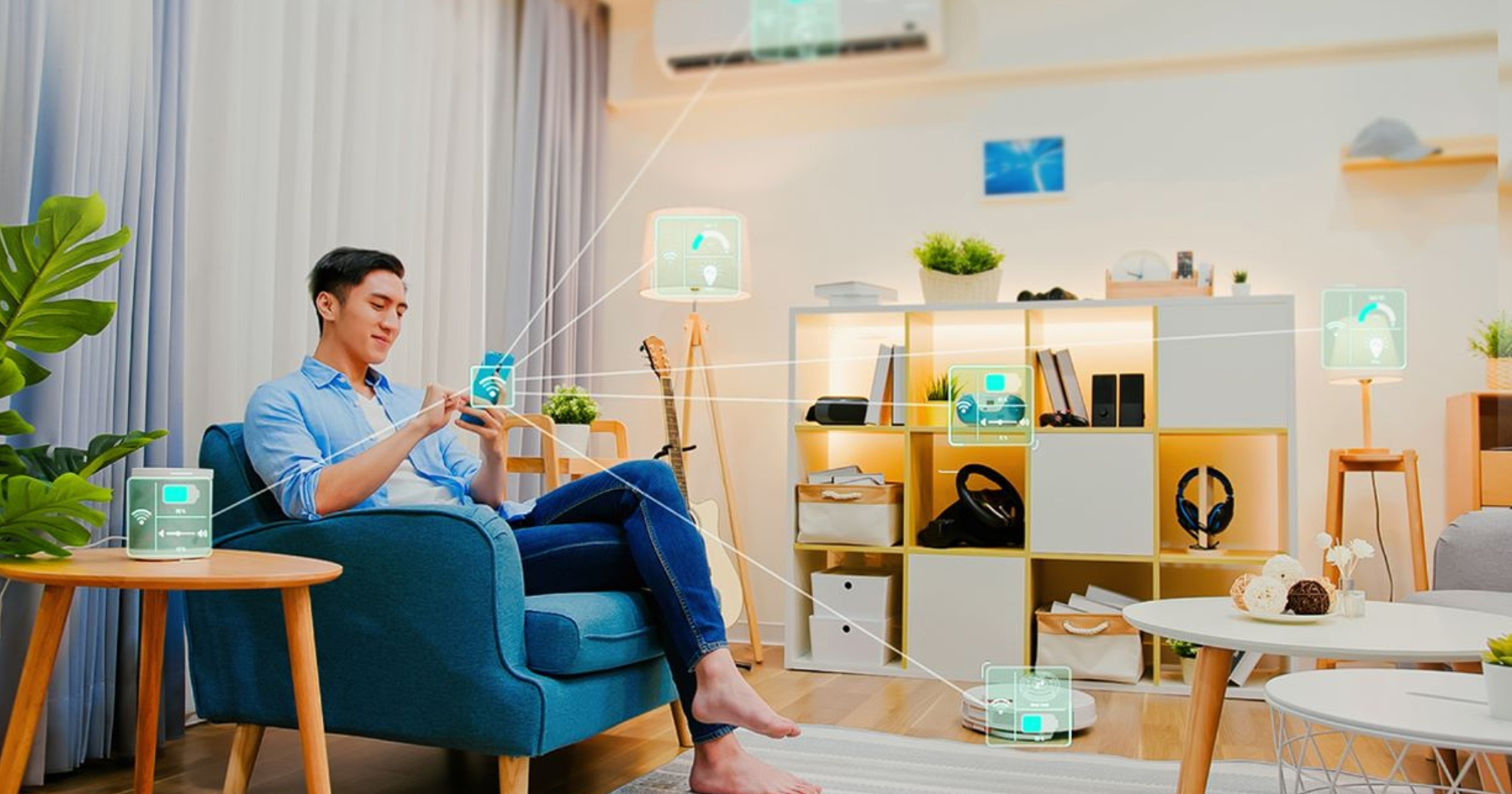
Energy Saving Tips for Living a More Sustainable Life
The current global energy crisis has contributed to both the rising costs of energy and shortages across the globe. These shortages are damaging consumers, businesses and economies and have put a spotlight on the importance of energy saving.
How can we do this? The first step is to change our habits and consumption behavior. Using less power daily and investing in more energy efficient solutions can help reduce both our carbon footprint and electricity bills and help us live more sustainably.
Here are a few practical ways to reduce your energy consumption.
1. Unplug your electronics.
Even when you are not using them, appliances consume energy. This is known as phantom load and can add to your electricity bills. You can avoid this by unplugging any appliances that are not being used or plug them into a power strip and switch off the power strip when the devices are not in use.
2. Prioritize efficiency
Optimize the energy efficiency in your household with a few simple, low-cost investments.
- Switch to LED lights: LED lights last as much as 20 times longer than an incandescent bulb. They are more expensive than other light bulbs but will save you more electricity.
- Buy appliances that consume less energy: When shopping for new devices look for ENERGY STAR qualified products that have the lowest consumption. Try and be smart about what you get for your home. For example, if you don't need a large refrigerator, buy a smaller one. Making small changes like this will help you save more on electricity bills in the long run.
- Don't skip tune ups: Maintaining your appliances will mean lower energy costs and longer operating lifespan. Care for your devices and they will function more efficiently in the long run. E.g.
- Cooling: Regularly clean the filters in your air conditioning unit to keep them working efficiently.
- Refrigerator: Keep the coils at the back of your refrigerator clean
3. Transition to using solar energy.
It is no secret replacing your general electricity with solar power can reduce your overall energy consumption and costs. When you break it down, the cost of your solar panels will be lower than your daily electricity consumption. Not only that but using solar panels will give you access to an unlimited supply of green energy.
Eastman Solar has a range of solar products that are specifically designed to help you save more energy and lower your carbon footprint. Installing solar panels and using solar powered batteries are an easy way to ensure you are saving more while doing more for the environment.
Want to learn more about clean living energy solutions? Get all the info on Eastman Solar products Here